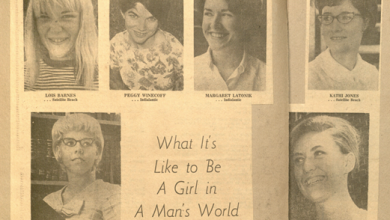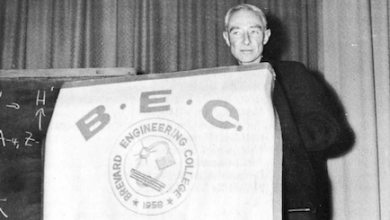The Secret History of College Players: Celebrating a Half- Century of Magical Performances
Dateline: 1969

May 2, 2019, marks the fiftieth anniversary of Florida Tech’s College Players’ (CP) premiere performance of David Rogers’ adaptation of Winifred Wolfe’s novel If a Man Answers. A half-century later, the CP has earned the distinction of being the oldest student-run organization at Florida Tech. Much has changed since that halcyon Friday evening when the stage lights went up on the CP’s first production in 1969. In their fifty years of existence, however, the College Players have remained a vibrant, imaginative force at Florida Tech.
Too Many Men
The genesis of the College Players is an intriguing, surprising story. In the fall of 1968, a freshman electrical engineering student named Kenneth (Kam) McCormick arrived on campus from New Jersey. As McCormick unpacked his suitcases, he was dismayed when he discovered that out of a student body of roughly 2,500 undergraduates there were only eight women undergrads. McCormick remembers that during the next few weeks, the male to female ratio at Countdown College was a recurring conversation topic between McCormick and his friend Gary Lenz.

McCormick was not alone in his consternation about the dearth of women on campus. In November 1968, Florida Tech student body president D. Wayne Rardon went so far as to hire a Playboy Bunny to come to campus as part of the commemoration of the tenth anniversary of the college’s founding. At the dinner celebrating Countdown College’s launch, Rardon gleefully watched as Playboy Bunny, Kathy Kennedy, presented Jerry Keuper with a lifetime subscription to Playboy Magazine. Rardon and his student government co-conspirators hoped that the magazine’s monthly arrival would inspire Keuper to rectify the miserable male to female ratio. In the weeks following the dinner, it was rumored that Keuper, the college’s rocket scientist president, had hatched the idea of opening a program to train airline stewardesses to remedy the situation. The airline stewardess idea proved a fantasy. Five months after the celebratory banquet, Wayne Rardon groaned in a Crimson Op-Ed that “the girl situation is a real problem.” There was no easy solution. Rardon confided to his colleagues in student government that he feared that “unless we have a Florida State teachers’ [sic] college or a southern branch of Radcliffe, open up in Brevard County the problem will remain.”
Launching the College Players

Kam McCormick disagreed. Taking an adage from Benjamin Franklin’s Poor Richard’s Almanac, McCormick told his friends “the Lord helps those who help themselves.” A chance meeting between classes with Gary Lenz in the newly opened SUB proved the decisive moment. McCormick, a self-described “technical guy,” hit on the idea of forming a theater company. Years later, McCormick acknowledged that his motivation had little to do with any “artistic” or “theatrical” aspirations. He and Lenz were engineering students. Engineers solve problems. Florida Tech suffered from a paucity of woman. McCormick and Lenz thought that starting the College Players would attract local women to campus.
McCormick inspiration came at an opportune moment. One year earlier in October 1967, Gleason Auditorium had opened. Jerry Keuper envisioned the new auditorium becoming a community resource. Bookings, however, did not keep pace with Keuper’s optimistic expectations. McCormick saw an opportunity in Keuper’s disappointment. “The under-utilized theater,” McCormick observed, had “just the right number of seats for small productions.” In January 1969, McCormick and Lenz brought their proposal for creating the College Players to the Dean of Students Ray Work.
Ray Work to the Rescue
Ray Work listened with interest to proposition. Work had a reputation as the student body’s advocate. Work wore many hats during his twenty-eight year career at the university,. In the college’s first decade, Work alternately led the electrical engineering department, served as Director of Admissions, College Registrar, Dean of Students, and Dean of Faculties. If this was not enough, Work oversaw campus facilities, finding time for tasks like drawing up the plans and overseeing the construction of the first student cafeteria. Ray Work was Jerry Keuper’s go to person when something needed to be done. Perhaps most important of all, the Ohio Buckeye and his wife Martha loved interacting with students. It was well known that there was always a place at the table at the Work’s house for a hungry student.
From the college’s founding, in 1958 Ray Work had lobbied hard for expanding student activities at Florida Tech. Work retained a special fondness for his fraternity days and engagement in numerous student activities at Ohio State. In 1965, Work won a critical victory when he convinced Jerry Keuper to allow him to launch an intercollegiate athletic program. Work recruited Andy Seminick, a retired Philadelphia Pirate catcher, to serve along with Dr. John Dollar as the fledgling college’s first athletic director. Later, Work would play a critical role in winning support for WFIT and bringing fraternities and sororities to Florida Tech.

Creating an athletic program was one thing. Launching the College Players, a theater company at a technical institute, was a different matter. At the appointed hour, McCormick arrived at Ray Work’s office. Ray Work liked the idea. If Florida Tech could field baseball and basketball teams, Work saw no reason it should not have a theater company. At the meeting’s conclusion, Work had agreed to allow the College Players access to Gleason Auditorium and given the nascent organization’s leaders a small amount of money as a start-up for their first production.
The First Production
The new student organization faced immediate hurdles. Changes were needed to make Gleason ready for a theatrical presentation. The physical challenges were straight forward and easily addressed. Gene Blaettler, a freshman management student, remembers working feverishly building make-up counters for the dressing rooms, installing lights, and mirrors and constructing an upstairs storage room. The local telephone company donated an intercom system that allowed the backstage to communicate with both the lobby and the balcony. McCormick and Gary Lenz, however, faced a bigger challenge. They did not have a play or a director for the production.
The College Players success hinged on finding the right play and a capable director to guide the production. By happenchance, someone mentioned that there was a local woman named Kay Kovac who had considerable theatrical experience. Kovac, who at fifty, had been selected by Florida’s governor LeRoy Collins to represent the state at the White House Conference on Children and Youth, liked the young men’s energy and spirit. She agreed. Given the young men’s interest in attracting women to campus, Kovac selected David Rogers dramatization of Winifred Wolf’s If a Man Answers. The play’s principal advantage was that it called for a large cast of women.
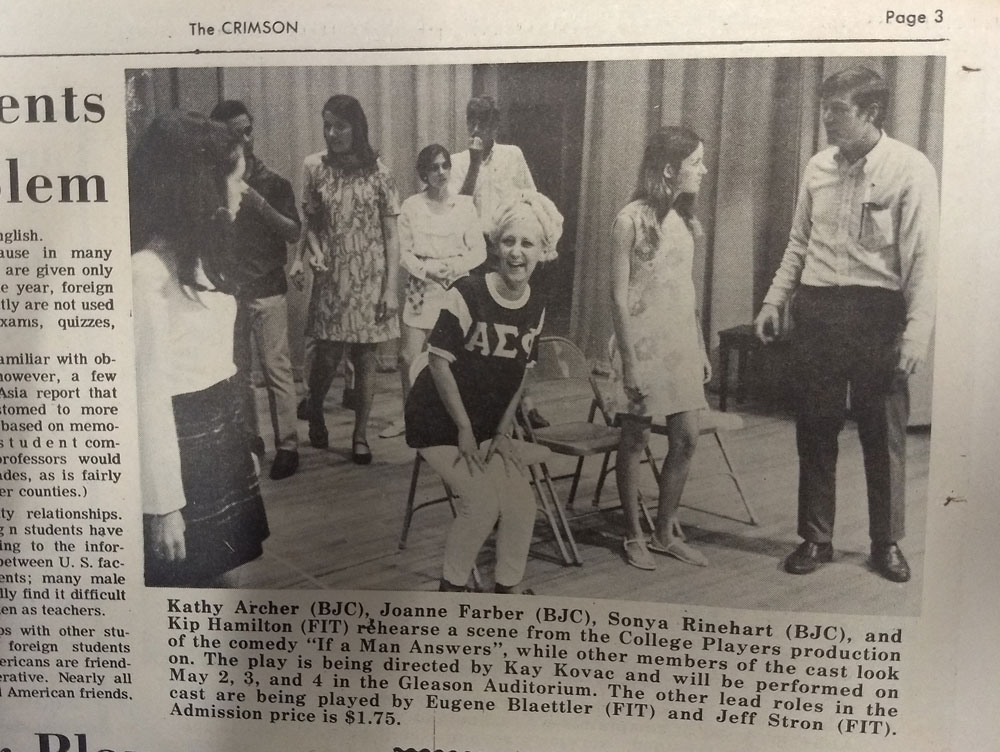
The number of female acting parts, more than compensated for the play’s literary deficiencies. Rehearsals began in April. The arrival of a score of Brevard Junior College co-eds, first for auditions and, then, for rehearsals did not pass unnoticed on the predominately-male campus. Mechanical, electrical, and ocean engineering students discovered a newborn interest in theater. A few brave souls like freshman like Gene Blaettler auditioned. Others began work on readying Gleason for the performance. In the weeks leading up to the opening night, the College Players grew to more than thirty members.
Kovac’s choice of If a Man Answers was perfect. In 1962, Universal-International had released a film version starring teen idols Sandra Dee and Bobby Darin. Sonya Rinehart, who played the lead in College Players’ production, remembered seeing the film. The play was a farce revolving around a young woman, named Chantal (played by Rinehart), who hoped to make a career as a model. She meets and falls in love with a young man named Gene Wright (played by Kip Hamilton) who was a New York fashion photographer. They marry and Gene demands that Chantal give up her modeling career and become a stay at home wife. Problems arise when a gaggle of attractive models attempt to lure John away from his wife. Chantal’s mother advises her that she needs to train her husband. She gives her daughter a book on “How to Train Man’s Best Friend” and tells her daughter that men should be treated as pets. Hijinks ensue and the play ends with Gene a dutifully, obedient husband and Chantal, a very pregnant wife.
Magic and Stardust

Opening night was a stunning success. Gene Blaettler, cast in the part of Chantel’s father, John Stacey, recalled the cast’s excitement on opening night. Kam McCormick wanted to begin the Players’ first performance in Gleason in an “untraditional” way. The auditorium’s curtain was intentionally left open as the audience took their seats. At 8:00 pm, McCormick called out from the back of the auditorium “Does anyone know when the play is going to start?” At that point, Sonya Rinehart, playing the part of Chantal Stacey walked on stage and the play began.
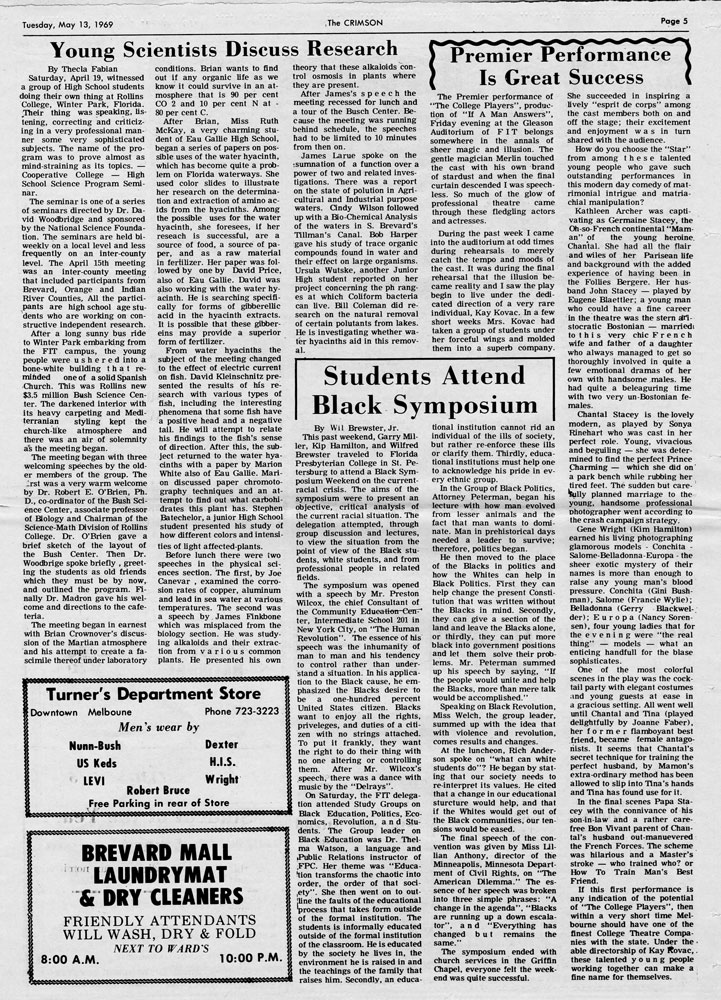
The CP’s debut performance of If a Man Answers was a smashing success. Sonya Rinehart remembers a few close calls in involving complete costume changes behind the flats. In its review, The Crimson raved about the Players’ premier. The evening “belongs somewhere,” the reviewer wrote “in the annals of sheer magic and illusion. The gentle magician Merlin touched the cast with his own brand of stardust and when the final curtain descended, I was speechless. So much of the glow of professional theater came from these fledgling actors and actresses.” Years later, Sonya Rinehart offered a more realistic assessment of the audience’s response when she observed that seeing “girls in negligees had something to do” with the play’s success. The ecstatic Crimson reviewer declared that he hoped that the CP’s debut would be the first of a series of magical nights. “If this first performance is any indication of the potential of “The College Players,” the reviewer concluded, “then within a very short time Melbourne should have one of the finest College Theatre Companies in the state.”

Fifty years have passed since the College Players’ debut performance. Today the College Players is one of the largest campus organizations. Through the decades the spirit of the College Players has remained consistent. Their mantra rings true today as it did a half century ago: “Limited to the imagination, bounded by infinity.”
Note: The Crimson review got it right. The debut performance of the College Players holds a special meaning for Kam McCormick and Sonya Rinehart. They met during the production, later married and continue to revel in the “magical nights” that began in Gleason Auditorium. Well done!!
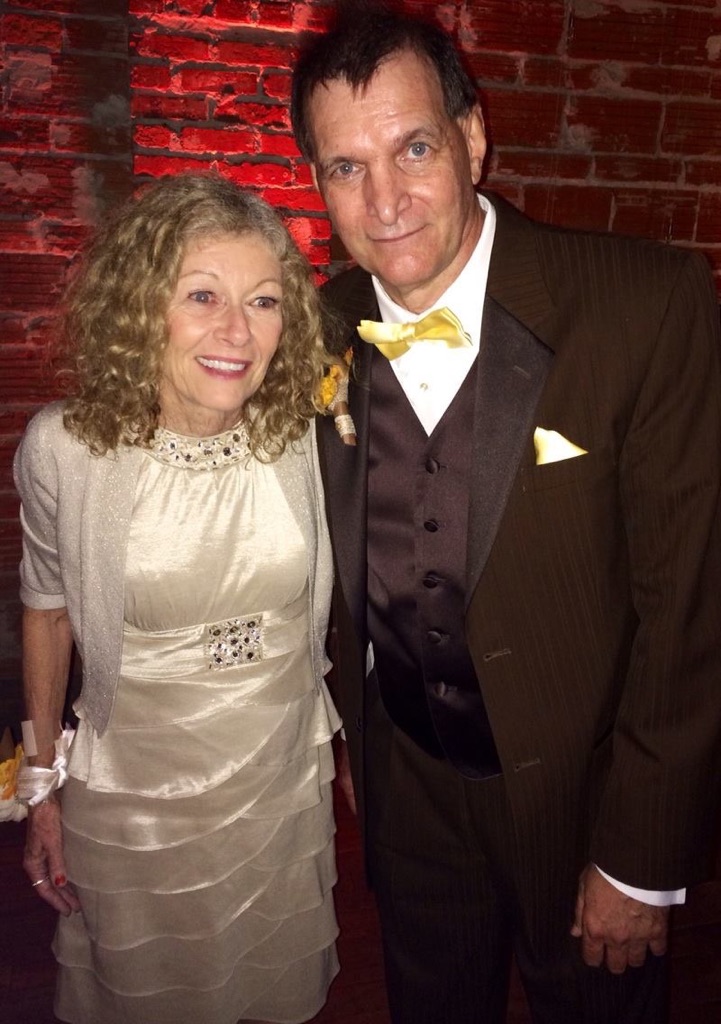
Note: My thanks go to Kam McCormick, Sonya Rinehart McCormick, and Gene Blaettler for their help in my research. Finally, it was my pleasure to serve as the College Players’ faculty advisor from 1992 to 2016.



